Urban forests provide numerous benefits to human health and wellbeing, the local urban environment and biodiversity conservation. As a result, many cities now have urban forest strategies to increase their tree canopy coverage. Despite this, in Perth, the capital city of Western Australia, many inner and middle-ring suburbs are experiencing declining urban forests. In this report, we explore different spatial concepts for improving canopy coverage using the Perth middle ring Local Government Area of Bayswater as a case study. We employ a Delphi method assessment of the concepts, about their respective benefits and feasibility. The report concludes that while experts often focus on the technical dimensions of urban forest plans, there is substantial support for schemes that embody a narrative that can help engender community support that is crucial for successfully implementing such policies.

Green dreams

© Australian Urban Design Research Centre 2020 A Delphi analysis of suburban forest concepts
Contents Introduction 6 Methods 16 Results 22 Discussion 58 Conclusion 62 Contributors 64 References 66
5
Introduction
Contact with Nature in urban areas – such as gardens, parks and streets with high levels of canopy cover – has a crucial role in people’s quality of life, influencing health and wellbeing...
6
Introduction
Urban street trees were an innovation of the Dutch, who used them to line canals, and this idea soon spread outward to other countries and cities (McDonald, 2015, p. 165). Now many cities have urban forest strategies– like New York City’s MillionTreesNYC –which encourage tree planting in urban areas (City of Bayswater, 2015; City of Vancouver, 2018; Department of Planning; McDonald, 2015, p. 21; The City of Melbourne, 2012). This surge in urban forest strategies is not surprising given the multitude of benefits urban forests provide to humans, biodiversity and the local urban environment.
Human Health and well being
Contact with Nature in urban areas –such as gardens, parks and streets with high levels of canopy cover – has a crucial role in people’s quality of life, influencing health and wellbeing through four key pathways (Hartig, Mitchell, De Vries, & Frumkin, 2014). Firstly, by promoting physical activity (e.g., walking and outdoor recreation); secondly, reducing stress, and providing an environment for physiological and mental health (Astell-Burt & Feng, 2019) and recovery that delivers coping resources to deal with the stressors of life; thirdly, promoting social interaction and sense of community; and fourthly, providing a healthy, comfortable environment. Overall, these lead to multiple health and wellbeing benefits that play out across an individual’s life span (Astell-Burt, Mitchell, & Hartig, 2014). In some cases, people can benefit from Nature even without physically engaging with it, e.g.,
observing a natural view from a window; (Cox et al., 2019; Ulrich, 1984).
Recreational walking and physical activity in green spaces and shaded streets helps to combat sedentary lifestyles and is associated with a reduction in obesity, heart disease, several types of cancer, and with extended life spans (Bell, Wilson, & Liu, 2008; Pereira et al., 2013; Yelenik & Levine, 2011).
Parks and streetscapes with substantial tree cover are also essential to create and reinforce social cohesion and sense of community. Indeed, such areas provide a venue for socialising with friends and neighbours and thus expand social ties (Kaźmierczak, 2013). A large study in the Netherlands showed that people with more green spaces within one kilometre of their homes felt healthier, less lonely and more socially supported than those without such amenities nearby. This pattern was more pronounced in high-density areas and for people with a low income, as well as children and the elderly (Maas, van Dillen, Verheij, & Groenewegen, 2009). A related study found that people with more streetscape trees and shrubs felt their neighbourhood was calmer and more cohesive, and this was related to improved self-reported health (De Vries, Van Dillen, Groenewegen, & Spreeuwenberg, 2013).
Biodiversity conservation
Urban biodiversity also allows people to engage with Nature and learn about the natural world meaningfully. As cities continue to sprawl, city dwellers are less likely to primarily experience Nature where they live and work (Miller &
7
Hobbs, 2002). Connection with Nature in urban areas is thus key to prevent the extinction of Nature’s experience (Miller, 2005). Furthermore, it fosters stewardship for Nature in the places where people live, but also beyond cities’ boundaries (Dunn, Gavin, Sanchez, & Solomon, 2006).
Connection with urban Nature in childhood underpins lifetime commitment to environmental protection (van den Born et al., 2018). Morover, it adds meaningfulness and satisfaction to people’s lives (Chan et al., 2016).
8
Parks and streetscapes with significant tree cover are not only crucial for people, but also to the other species we share our cities. There are more threatened species in Australian cities per unit of area than elsewhere in the country (Ives et al., 2016), a reality that mirrors the US (Schwartz, Jurjavcic, & O’brien, 2002). The threatened biodiversity reflects the negative impact of urbanisation. Parks with native tree plantings, and understorey vegetation, can also provide important refugia for biodiversity, and ‘stepping stones’ that facilitate species movement through the urban landscape (Threlfall et al., 2017; Threlfall et al., 2015). Street trees can also play a key role in biodiversity conservation by enhancing ecological connectivity throughout urban areas (e.g., Mullaney, Lucke, & Trueman, 2015).
Services to the local urban environment
Urban forests improve the quality of the local urban environment through the provision of several vital ecosystem services. Good canopy cover in parks, streetscapes or even private lots can
cool the microclimate and improve thermal comfort (A. M. Coutts, White, Tapper, Beringer, & Livesley, 2016). Trees cool the microclimate through evapotranspiration; however, this is a small effect compared to their shading, which can lead to localised reductions in the surface temperature of 5 to 20°C (A. M. Coutts et al., 2016). The role of trees in microclimatic regulation and thermal comfort is becoming particularly relevant in the context of increased temperatures in cities due to the combined effects of climate change and Urban Heat Island (A. Coutts, Beringer, & Tapper, 2010; Duncan et al., 2019). These can pose a severe threat to children and the elderly during extreme heat events (Kovats & Hajat, 2008). Moreover, trees and understorey vegetation in parks, streetscapes and private lots can provide several other ecosystem benefits, reducing noise from surrounding streets and roads, filtering air pollutants, and storing carbon (Bolund & Hunhammar, 1999; Tzoulas et al., 2007). Soils and vegetation also intercept rainfall, decreasing runoff into stormwater drains and increasing water infiltration into the ground (Nouri, Beecham, Kazemi, & Hassanli, 2013; Ossola, Hahs, & Livesley, 2015). Within urban areas, green solutions and technologies can also improve indoor air quality and thermal comfort (Balaban & de Oliveira, 2017; Xing, Jones, & Donnison, 2017).
Urban forests in Perth
One effect of background infill in Perth has been a decline in urban forest cover in inner and middle-ring suburbs (Brunner & Cozens, 2013, p. 232);
despite the importance of trees to supporting urban liveability (Figure 1). While there are some exceptions, the suburbs with the lowest percentage of urban forest cover tend to be those that have not resisted background infill (Department of Planning Lands and Heritage, 2016). Examples of the effects of background infill development on urban forests are the inner and middlering suburbs of South Perth, Bayswater (Figure 2,3)., Stirling and Canning (all which have high infill development targets) with the percentage of total vegetation cleared between 2001-2004 amounting to 13%, 12%, 11% and 11% respectively (McManus, 2010, p. 350). One reason that background infill development has resulted in the partial destruction of urban forests is a large proportion of urban trees are on private land, which can be more than 60% (In Brunner & Cozens, 2013, p. 234). Compounding this, trees and mature vegetation, are often ‘treated as trimmings to the designed urban environment and are afforded little or no protection against the exigency of meeting development aspirations’ (Brunner & Cozens, 2013, p. 232).
The clearing of this substantial urban forest has several potential ramifications for the provision of ecosystem services and in turn, urban liveability (Amati et al., 2017). In short, the urban forest provides environmental benefits, including reducing air pollution, sequestering greenhouse gasses (Brunner & Cozens, 2013, p. 232), infiltrating and cleaning stormwater, minimising the impact of heat islands, ameliorating the local climate, and supporting biodiversity (Department of
Planning & Western Australian Planning Commission, 2015, p. 55). The partial clearing of an urban forest for background infill development threatens the provision of these ecosystem services – services which traditional, un-subdivided, vegetated suburban form often provides (Hall, 2010; Seddon, 1994; Troy, 2004) – and arguably severely diminishes the liveability of an urban area.
The destruction of urban forests concerns many communities across Perth. Evidence of the importance of the urban forest to urban liveability in Perth is that 77% of respondents to the Perth ‘The Housing We’d Choose’ study considered that the ‘presence of trees’ is an important dwelling attribute (Curtin University & Hames Sharley, 2013, p. 19). Moreover, analysis of house prices in supports this. A comprehensive exercise in understanding the value effects of tree cover in Perth found that the proportion of tree cover on neighbouring parks, reserves or street verges adjacent to the property, had a significant and positive impact on property prices (Pandit, Polyakov, & Sadler, 2013, p. 16).
Given this concerning situation, this report advances plans for increasing tree canopy coverage in the Perth middle ring Local Government Area (LGA) of Bayswater and tests them using a survey of experts. We describe the process and provide a spatial ‘projective design’ utilising a case study, the Local Government Area of Bayswater (LGA). Bayswater is 6 kilometres northeast of Perth’s central business district in the middle-suburban belt in what some
9
commentators call the ‘greyfields’ (Newton, 2010). The LGA is typically suburban and has a reasonable current tree canopy coverage of 13% but also has an infill development target of 8500 dwellings (or approximately 19,550 people) by 2031 (Western Australian Department of Planning, 2010) which could threaten this forest. The plans proposed are, within reason, generalizable to the greyfields of other Australian cities, and to suburban areas experiencing urban consolidation around the world such as the UK and US (Hagan, 2017, p. 469).
10
11
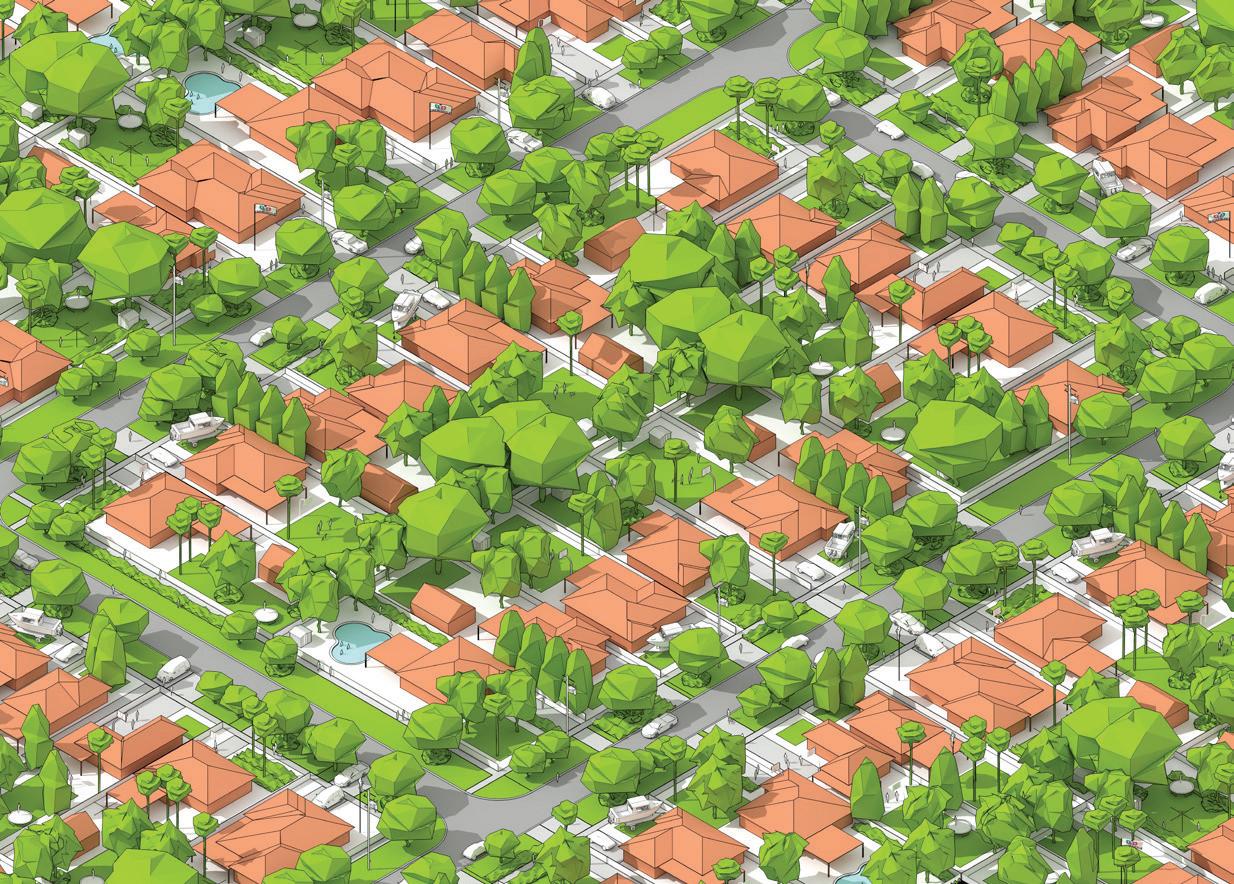
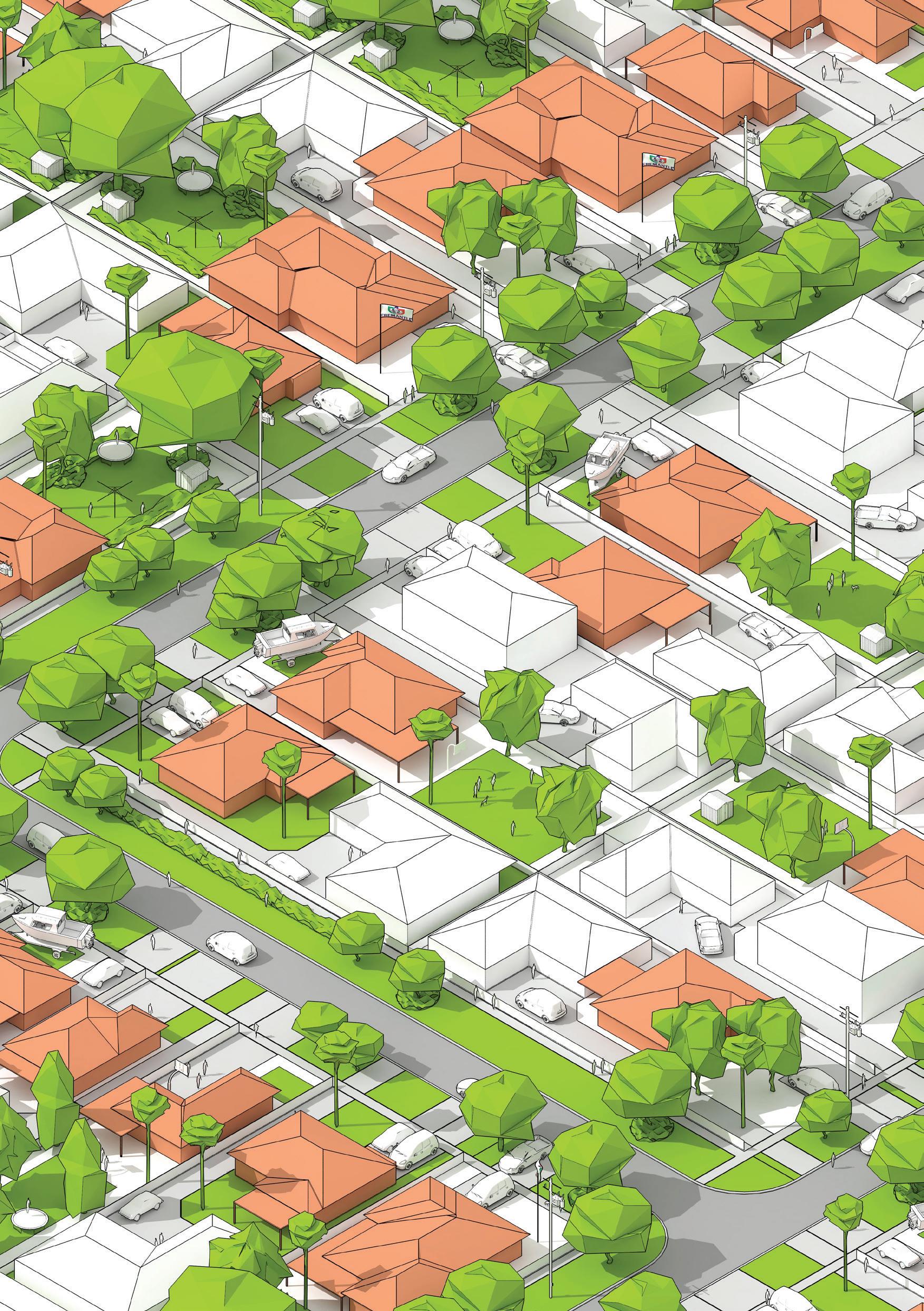
Background infill: Typical urban forests before, and after, background infill in Perth’s inner and middle ring suburbs
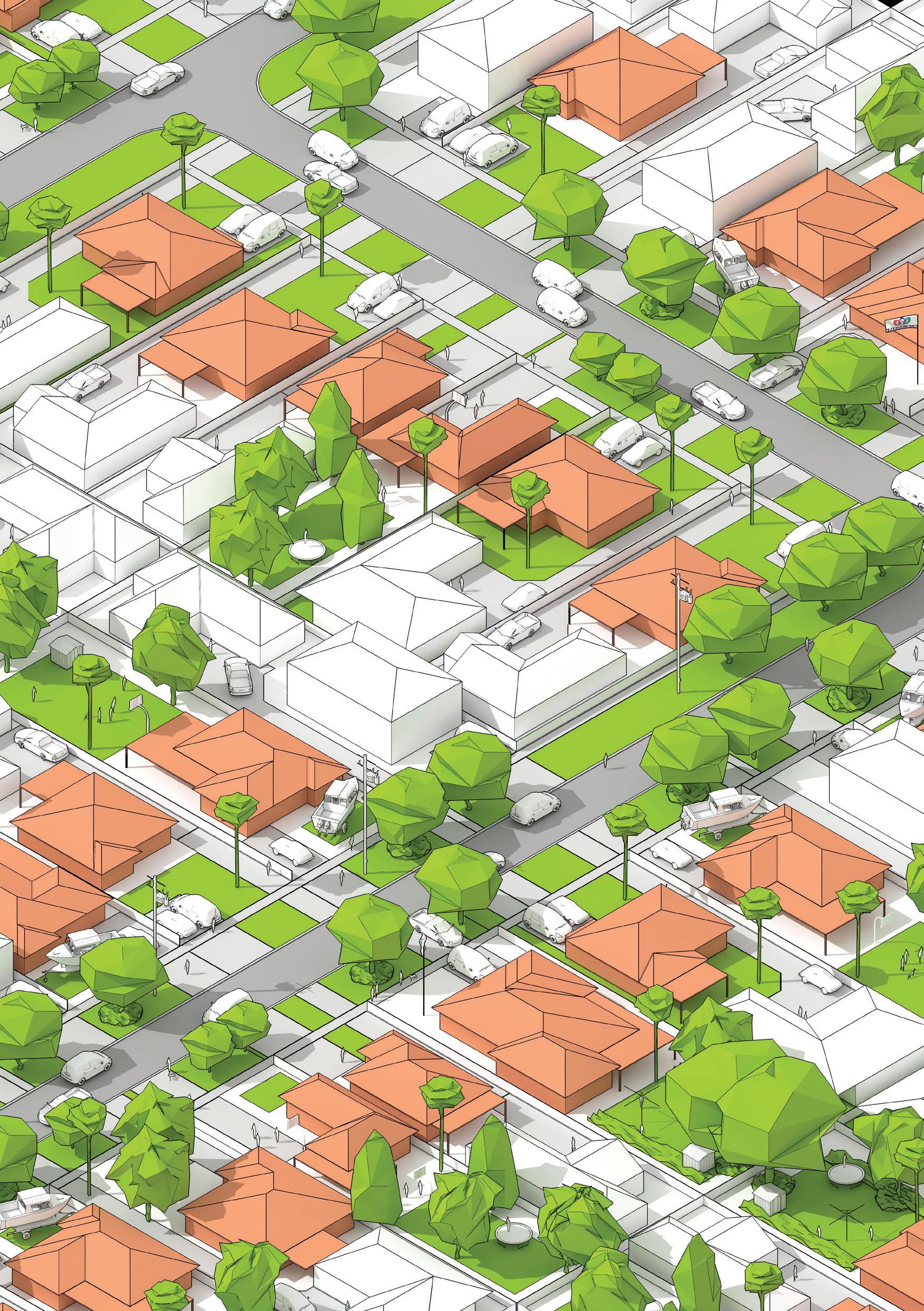
13

Existing canopy cover: City of Bayswater urban forest canopy cover (%) 2016. Data courtesy of the Department of Planning, Lands and Heritage, figure by the authors
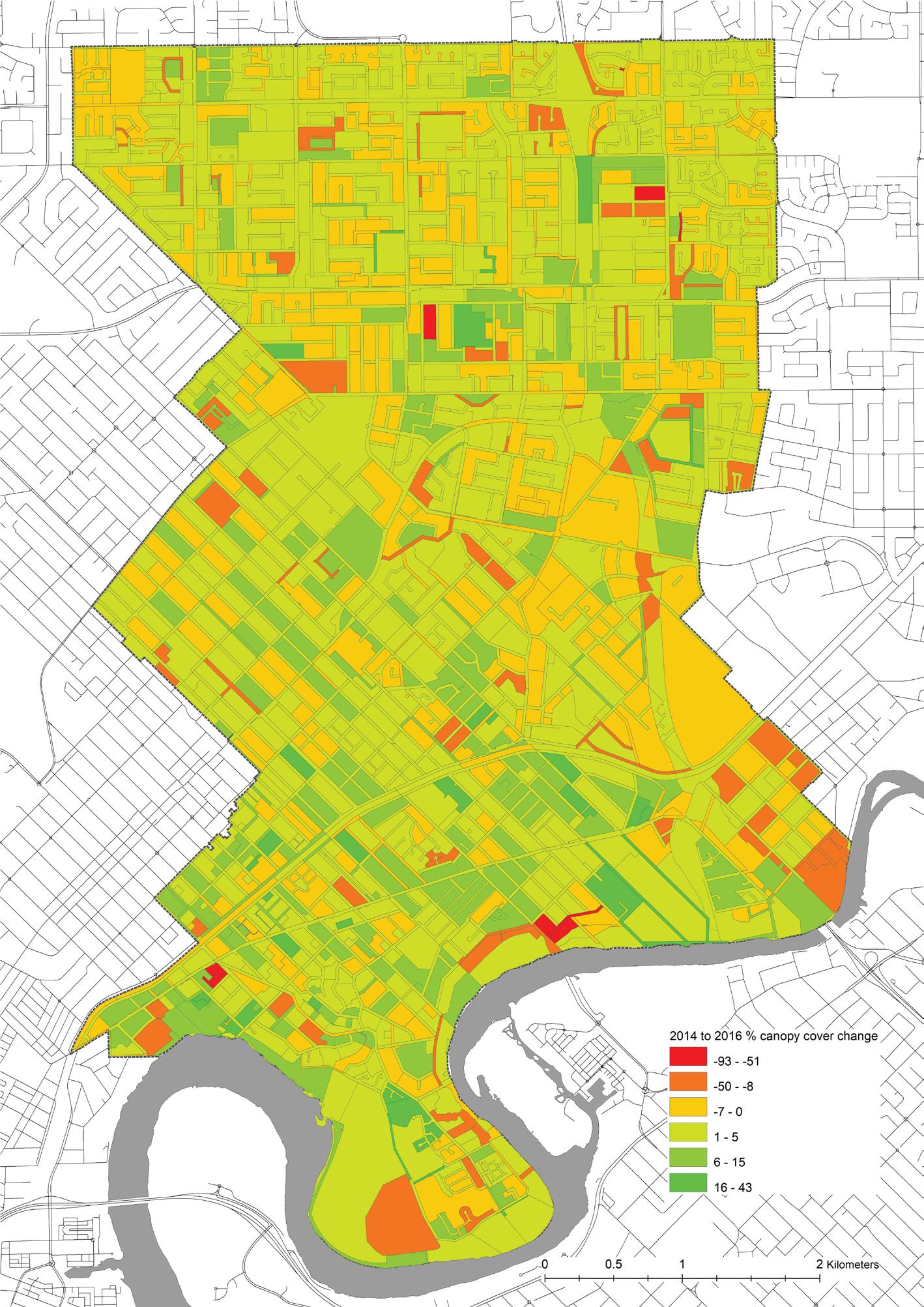
Canopy cover change: City of Bayswater urban forest percentage change 2014 to 2016. Areas of reduced canopy cover often result from background infill. Data courtesy of the Department of Planning, Lands and Heritage, figure by the authors
15
Methods
With the seven urban forest concepts designed and visualised, we then employed a Delphi method to assess these concepts....
16
Methods
This report records the findings from a research project we conducted in 2019/2020, for the City of Bayswater, in which we produced concepts to structure an increase canopy coverage from approximately 13.2%, to 20% by the year 2025 (City of Bayswater, 2018, p. 1) (Figure 4). This percentage equates to 117,000 new trees if each tree is 5m in diameter. The research question which guided this enquiry was:
What spatial concepts can local governments adopt for boosting urban forests in densifying suburbs that provide a multitude of benefits to residents yet remain feasible for implementation?
We employed research methods in the following stages to satisfactorily answer this question.
Design research exercise
Firstly, we conducted a design research exercise to generate a variety of different concepts for spatializing the 7% increase in urban canopy cover. While some question whether ‘design research’ is a valid research method, Swaffield and Deming assert that ‘design may become research if it is planned and undertaken as a systematic process of inquiry, with a clear theoretical framework and research questions’ (Swaffield & Deming, 2010, p. 206). In a less rigid definition, Kim Dovey explains that:
Design research is a speculative mode of enquiry that explores the ‘space of possibility’ embodied in a particular urban assemblage... Design research
then generates forms of spatial knowledge about urban futures that becomes a basis for infrastructural investment. Through a range of visual and spatial techniques, such as drawing, diagramming and 30 modelling, design research generates, articulates and tests a range of possible urban scenarios at different scales, exposing new ways of thinking and new definitions of the problem (Dovey, 2016, p. 259).
To ensure that the urban forest concepts we produced were robust we designed seven concepts with each specifically referencing the research question and our client’s aspirations for a seven per cent canopy cover increase, in an LGA that is generalizable to a broader suburban condition. In the development and refinement of the concepts, we conducted a focus group with the City of Bayswater staff to review the concepts against economic, environmental and social criteria.
Delphi technique evaluation of urban forest concepts
With the seven urban forest concepts designed and visualised, we then employed a Delphi method to assess these concepts. The Delphi method is a systematic method for the solicitation and aggregation of informed judgments from a group of experts on a particular subject. It enables structured communication among a group of individuals, allowing them, as a whole, to deal with a complex problem effectively (Perveen, Kamruzzaman, & Yigitcanlar, 2017, p. 6). Moreover, it enables the collaboration of a diverse group of experts through an iterative
17
survey process as opposed to face-toface meetings.
In a Delphi process, a facilitator or coordination team designs a questionnaire and sends it to a group of selected experts. Thus, it facilitates the involvement of geographically dispersed experts in the process and brings external validity of the scenarios. Furthermore, the Delphi technique ensures the anonymity of experts and therefore warrants that due to the dominance of a single group or individual, the results are not biased. Participants in Delphi methods feel comfortable in sharing their opinions on uncertain issues in an anonymous manner, which leads to a higher response rate compared to other group communication methods, such as seminars, workshops, and working/focus groups (Perveen et al., 2017, p. 6).
18
We conducted non-random purposive sampling to deliberately target individuals with relevant expertise within a population (Kelley, Clark, Brown, & Sitzia, 2003, p. 264). Our Delphi method included the following stages:
Firstly, we assembled a panel of 15 experts. These included local government strategic planning officers, parks and gardens managers, civil engineers, directors of technical services, community engagement advisors, sustainability and environment managers, recreation managers, arborists, place managers. In total, we had 11 respondents complete the survey.
Secondly, we distributed the design concepts to the panel of experts for review via an online survey. We based
the urban forest concept assessment framework on the three themes of economic benefits, environmental benefits and social benefits. We asked respondents to assess the seven urban forest concepts against an assessment framework, indicating how strongly they agreed or disagreed that the urban forest concept would deliver economic, environmental and social benefits. Where, 1 = strongly disagree; 2 = disagree; 3 = neither agree nor disagree; 4 = Agree; 5 = strongly agree. The survey also asked whether the concept was feasible.
We developed the benefits descriptors from the City of Bayswater’s existing urban forest strategy ‘Greening our Garden City’ which The City based on a comprehensive process of community engagement (City of Bayswater, 2015, p. 15). Below we set out the specific benefits respondents used to rate each concept under each theme.
Economic benefits:
• Increased property values: Trees visually enhance an area and increase property values
• Reduced energy usage: Trees strategically planted to provide shade from the sun can cool buildings by up to 7°C, which can reduce air conditioning costs.
• The increased life span of infrastructure and assets: Tree shade can increase the life span of infrastructures such as roads which in turn reduce maintenance and replacement costs.
• Reduced health care costs:
Studies indicate that greener suburbs encourage people to exercise more and provides better mental health outcomes. Increasing the physical and mental health of people results in a reduction in community health care costs (City of Bayswater, 2015, p. 15).
Environmental benefits:
• Shading and cooling: Trees provide shade and reduce the surrounding air temperature through the process of evapotranspiration.
• Improved air quality: Trees trap and absorb air pollutants such as dust and particulate matter which improves air quality.
• Reduced stormwater runoff: Trees slow stormwater flow rates, reduce stormwater runoff and improve water quality by capturing and filtering water through their leaves and root systems.
• Carbon sequestration: Trees help to mitigate the impacts of global warming by capturing and storing carbon and removing it from the atmosphere.
• Provision of food and habitat for wildlife: Trees provide food sources and shelter for animals such as birds, mammals, insects and other wildlife
• Reduced UHI effect: Trees reduce UHI effects through shading and evapotranspiration (City of Bayswater, 2015, p. 15).
Social benefits:
• Enhanced sense of place: Tree-lined streets and well-designed green spaces enhance the urban form,
which facilitates a strong sense of community connection to an area.
• Reduced sun and heat-related illnesses: The provision of shade and a subsequent reduction in air temperature can help reduce mortality rates, especially amongst the most vulnerable, e.g. the young, the elderly and homeless people.
• Improved community cohesion: Green urban spaces, especially those providing well-shaded areas, encourage the local community to gather and interact and this facilitates community cohesion.
• Improved physical and mental health: Providing green spaces within urban areas encourages people to undertake outdoor activities such as exercise and promotes interaction with others which has a variety of positive health effects for both physical, mental and social wellbeing.
• Reduction in anti-social behaviour: Research indicates that green spaces have a positive influence on the social behaviour of a community and can reduce the level of particular illegal activities (City of Bayswater, 2015, p. 15).
Feasibility:
• The concept is likely to be accepted by the community and in particular individual landholders
• The concept cost is not prohibitive
• This concept can be implemented within existing governance arrangements
19
• This concept is resilient to a drying climate and sea-level rise
Thirdly, we assessed the initial assessment and justifications of the experts through the computation of scores for each of the design concepts. The Likert-scale responses were scored as follows: 1 = strongly disagree; 2 = disagree; 3 = neither agree nor disagree; 4 = Agree; 5 = strongly agree. The survey also asked whether the concept was feasible. For each design scenario, we summed the scores for each theme rated by the experts. A total score for each design concept was also created by summing the scores across all themes.
Fourthly, we provided feedback on the collective responses to the design concepts to the experts via a second online survey, and we asked them to review their initial forecasts in light of the feedback. We also asked them to rank their first, second and third preference.
Fifthly, we developed the final assessment by aggregating the experts’ preferences (Hyndman & Athanasopoulos, 2018).
20
20%= 6.5km2
13%= 4.2km2
Canopy cover increase: Proposed City of Bayswater canopy cover increase from 13% to 20% of the Local Government Area’s total area. Figure by the authors
21
Results
The following diagrams articulate the scale of the proposed 7% increase in the City of Bayswater’s canopy cover.
22
Results
In total, we had 11 respondents complete the survey. The results consistently ranked ‘The Kid’s Forest’ and ‘The Streets Equaliser’ highly (Figure 5). Below we discuss the concepts in order of their ultimate ranking in stage two survey, and the comments respondents made regarding their benefits and feasibility.
¬The
Kid’s Forest
The highest-ranked concept (based on the experts most ‘preferred’ concept) we entitled ‘The Kid’s Forest.’ In this concept, we focussed on tree planting concentrated around playgrounds, schools, day-care centres, medical and aged care, and adjacent streets (within 400m) of all school sites within the City of Bayswater. The aim of this was to provide direct benefits to the groups that are particularly vulnerable to extreme temperatures and to encourage active transport for children to and from school to tackle high levels of obesity. To achieve the increase, the City required parks and streets within these zones to have a canopy cover increase from 6 to 55% (Figure 6, 7).
Respondents noted that this concept was ‘strong’ and ‘will protect the most vulnerable members of our community.’ They also felt it resonated with the ‘literature which is coming out about children’s early experiences of nature, and how it shapes their ability to connect, and also then feel some ownership and care for nature as adults.’ Moreover, they noted it could lead to greater ‘walkability and safety of access to schools’ because ‘higher
canopy coverage over verges on… helps to reduce traffic speeds.’ They also considered that it would ‘increase the volume of natural shade’ around playgrounds ‘as opposed to using artificial shade.’
However, some respondents were concerned that it ‘may be seen as inequitable by those who are not in one of the identified areas’ and that due to it not being ‘evenly spread through the suburbs, creating inequity of benefits.’ Finally, the concept requires negotiating with ‘private landowners and state government [Department of Education] who does not have tree cover as a priority.’ Nonetheless, others felt the ‘concept is easily implemented and targets a key vulnerable group.’
The Parks Equaliser
The second-highest ranked concept (based on the experts most ‘preferred’ concept) we entitled the ‘The Parks Equaliser.’ In this concept, we distributed the 7% canopy cover increase to parks with a current low canopy cover. To achieve the increase, the City is targeting, required parks across the LGA required parks to go from an average canopy cover of 23% to 60% (Figure 8, 9). Respondents felt that this concept ‘would be quick and easy to implement (an easy win) and likely to be most easily accepted by the community as long as it is not blocking views.’ Respondents felt that this concept would be best suited to those parks which do not have an active ‘sports provision’ but ‘currently (are) particularly low in a canopy coverage.’
Nonetheless, respondents had several
23
reservations. Some worried about community opposition because they have experienced ‘instances where we have had to go into parks and remove trees because there has been community opposition to the amount of coverage in a reserve because it impacted on the grass growth and [resulted in] twigs in the playground and ‘blocked views and restricted the use of parks’ particularly for active sports. Due to the looming threat of community resistance, respondents felt that they would need to ‘tailor what we do for certain areas.’ Finally, respondents thought that the benefits of focussing tree planting in parks would only ‘benefit (only) those that visit the reserves’ and the ‘only potential energy savings will be reduced reticulation costs’ with little improvement for houses.
24
The Streets Equaliser
The third-ranked concept (based on the experts most ‘preferred’ concept) we entitled ‘The Streets Equaliser.’ In this concept, we distributed the 7% canopy cover increase to road verges (excluding freeways) with a current low canopy cover. To achieve the growth, the City required parks across the LGA required road reserves to go from an average canopy cover of 10% to 30%. Such urban forest increase offers direct benefits to adjacent households, e.g. cooling or increase house price (McDonald, 2015, p. 169) (Figure 10, 11).
Respondents noted that this concept delivered substantial ‘psychological benefits’ to adjacent ‘individual households’ who ‘have more trees in streets, as opposed to in the parks.’
They also felt that increased tree planting in streets would improve ‘liveability’ and increase property values. Finally, respondents felt the concept ‘allows for equal access to the benefits for the entire community due to the proximity to every residence.’
Nonetheless, respondents raised several concerns. Some noted that it would require the ‘undergrounding of overhead infrastructure’ such as power which would require a ‘significant investment.’ Moreover, respondents pointed out that the maintenance of the trees will be a higher cost (than trees in parks) both ‘because the trees are spread out, but also the expectation of community will be regular pruning to individual resident requirements.’ While respondents referred to the ‘equality’ of tree distribution, other raised concerns the concept will trigger a backlash from ‘people who do not want a tree on their verge.’ These could be elicited by ‘reduced verge parking, leaf drop and interfering with new crossovers as part of redevelopment.’
The Green Stream
The fourth-ranked concept (based on the experts most ‘preferred’ concept) we entitled ‘The Green Stream.’ In this concept, we focussed tree planting in streets around upgraded drains and foreshores in a bid to retrofit Water Sensitive Urban Design (WSUD) to Bayswater’s extensive matrix of drains which currently only serve flood mitigation functions. Tree planting on foreshore reserves can also play a role in alleviating foreshore erosion which can occur with Sea Level Rise. To achieve the City’s overall target of a 7% increase
in canopy cover required these drainage reserves, streets and foreshore parks to go from 12 to 52% canopy cover (Figure 12, 13).
Some respondents felt that this concept provided positive’ outcomes such as connectivity for people and biodiversity’ and a ‘better spread of ecosystem services through the city’s underutilised spaces’ as well as ‘improving water quality.’ Nonetheless, most respondents felt that the concept would cost ‘a hell of a lot more’ because it requires the ‘reshaping of drains’, and as such ‘for the dollars you spend, the trees you are getting, there is just no comparison.’
Indeed there was a perception that the concept would have ‘limited social impact if these are fenced off to the community where they to the rear of private property.’ Others noted that this concept ‘would require agreement with WaterCorp’ (the government department responsible for the management of drains) who do not have a mandate for increasing tree canopy cover. Moreover, respondents felt there would be ‘challenges planting in drainage channels behind private properties’ which will ‘also limit access to the drain for maintenance.’ Other respondents felt that ‘attitudes with the WaterCorp are slowly changing:’
…they are not as averse to things as they used to be. They used to be very against any sort of refraction in a drain, but they are open to all riffles and that sort of thing now. And you never know, they may start doing it them self-one day.
Nonetheless, respondents were generally pessimistic that Watercorp
would lift restrictions in drainage corridors to the degree they could sustain urban forests.
The Green Micro-Grid
In this fifth ranking concept, we focussed tree planting focussed in major corridors connecting transit hubs, parks and schools with an overarching aim of increasing active transport to amenities but also existing and proposed train stations so to increase mass transit usage. To achieve the City’s overall target of a 7% increase in canopy cover required these streets – and adjacent parks – to go from 12 to 43% canopy cover (Figure 14, 15).
Respondents raised concerns about this scheme, as tree planting in major corridors (e.g. Tonkin Highway and Guildford Rd) is problematic because there is ‘often competition for space, so civil works may also be required to accommodate several assets, which could push the cost up.’ Moreover, respondents felt the concept was inequitable because ‘local streets… missed out.’
The Green Funnel
In this low ranking concept, we focussed tree planting in streets, parks, and private land along areas the City of Bayswater have designated biodiversity corridors. Our aim with this concepts was to create an urban forest (of primarily endemic tree species) to provide essential refugia for biodiversity and ‘stepping stones’ that facilitate species movement through the urban landscape (Threlfall et al., 2017; Threlfall et al., 2015). To achieve the City’s overall target of a 7% increase in canopy cover
25
required these areas to go from 12 to 20% canopy cover (Figure 16, 17).
63% canopy cover (Figure 18, 19).
26
Some respondents noted that ‘this biodiversity corridor stuff does resonate with a lot of people’ and that the concept would have ‘good outcomes for biodiversity’ however most comments were negative. In particular, respondents felt that the concept would be difficult to implement because it requires the planting of trees on private land, a situation which would be even more challenging in ‘areas zoned for high density’ due to perceived ‘root damage and the leaf litter and all that sort of thing.’ Community opinion is that the City should not regulate on private land. This is due to the perceived unfairness of allowing past developments to maximise their profits whilst potentially limiting the profits made on future developments (City of Bayswater, 2015, p. 18).Other respondents felt that the scheme would deliver benefits only ‘to those living within the corridors or close to them.’
The High-Density Forest
In this lowest ranked concept, we focussed tree planting focussed in areas of the City of Bayswater have zoned for increased urban densities between R25 and R40 but also areas with Activity Centre zonings. The intention with this concept is that tree planting in the streets and parks of such regions will compensate, to some degree, for the loss of greenspace on private lots that generally accompanies urban densification (Brunner & Cozens, 2013). To achieve the City’s overall target of a 7% increase in canopy cover required these parks and streets to go from 13 to
Respondents raised numerous concerns about this concept. They felt that the concept is inequitable and would deliver ‘benefits for only some of the community, which is not fair’ and would ‘split or community.’ Others raised issues with the theming of the concept about urban density which they felt would elicit adverse community reactions, and that ‘it is not as good a story as the schoolkids one’ (e.g. ‘The kid’s forest’). Finally, respondents felt that the concept would be difficult for the City of Bayswater to implement because of ‘potential issues with servicing and space for trees in higher density areas.’
Score out of 5
Delphi stage one survey results: The experts ranked ‘The Kid’s Forest’ and ‘The Streets Equaliser’ highly in terms of the benefits provided while ‘The Parks Equaliser’ ranked highly in terms of feasibility. Figure by the authors
27 0 0.5 1 1.5 2 2.5 3 3.5 4 4.5 5
The Parks Equaliser The Streets Equaliser
The Kid's Forest The High Density forest
The Green Micro Grid
The Green Stream
Economic benefits Environmental benefits Social benefits Feasibility Benefits overall
The Green Funnel
2.
The Parks Equaliser 3. The Streets Equaliser 1. The Kid's Forest
4. The Green Stream
7. The High-Density Forest
Urban forest concepts to achieve the City of Bayswater’s proposed canopy cover increase. Urban forest concepts are arranged in order of preference from Delphi stage two survey
5.
The Green Micro-grid 6. The Green Funnel
29
Trainline
The Kid's Forest
In this concept, we focussed on tree planting concentrated in playgrounds, schools, day-care centres, medical and aged care, and adjacent streets (within 400m).
Before
After
31

Kid’s Forest: To achieve the overall 7% increase targeted by the City parks and streets within these zones will need to have a canopy cover increase from 6 to 55%
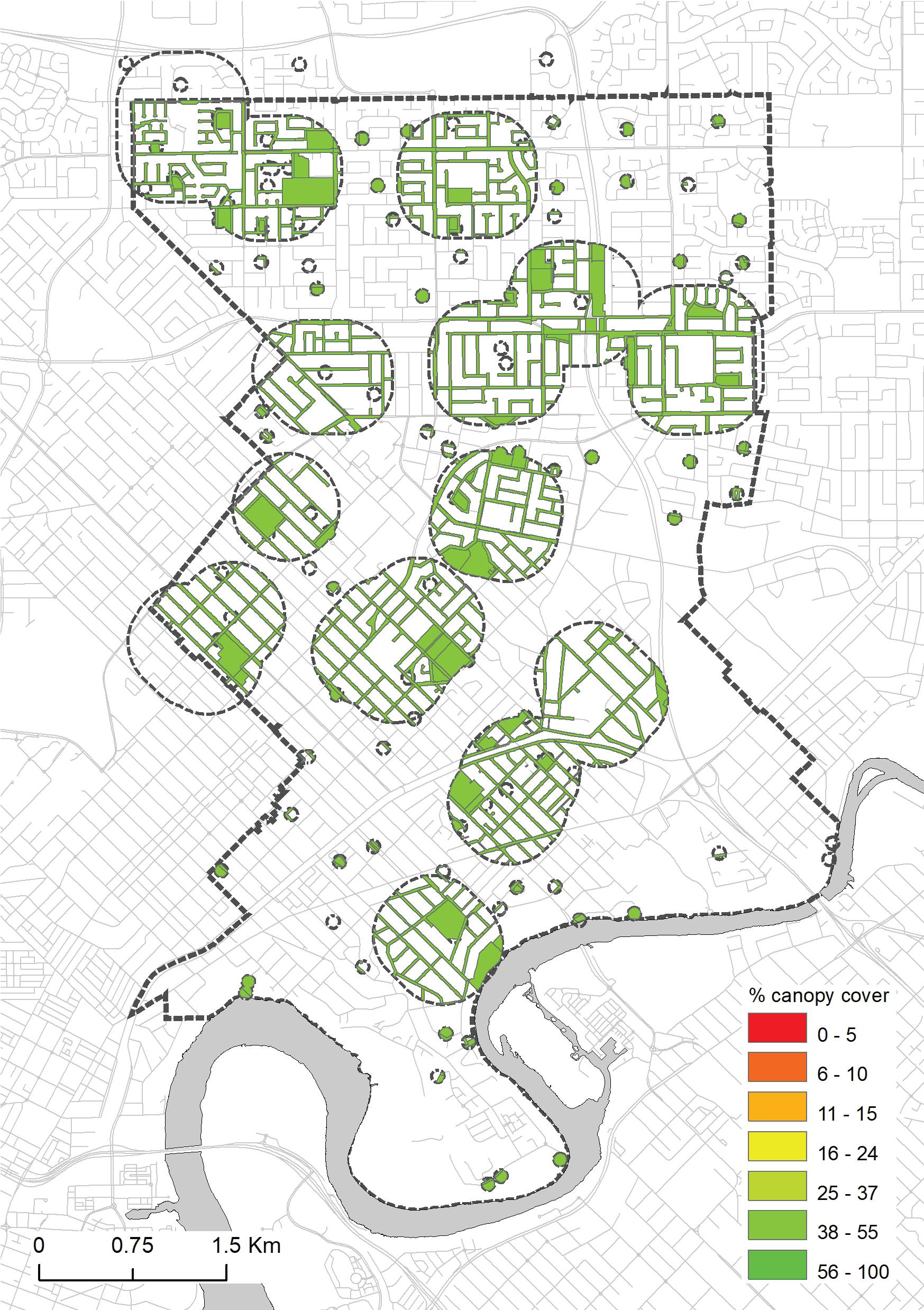
33
The Parks Equaliser
In this concept we focussed tree planting in parks with low existing canopy cover to achieve parity across the City of Bayswater
35
Before After
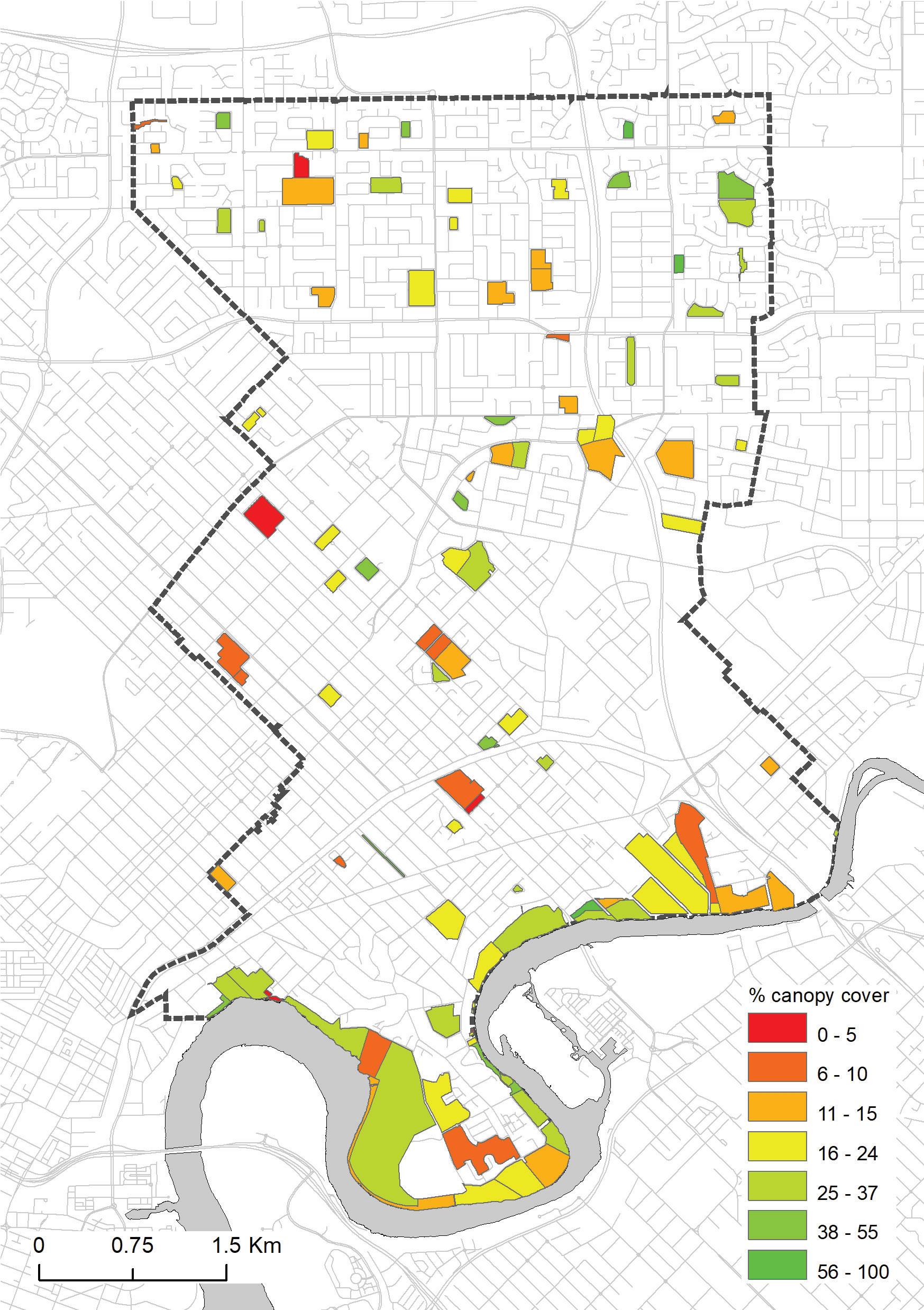
The Parks Equaliser: To achieve the overall 7% increase targeted by the City requires park canopy cover to increase from 23% to 60%

37
The Streets Equaliser
In this concept, we distributed the 7% canopy cover increase to road verges (excluding freeways) with a current low canopy cover
Before
After
Cafe Cafe Cafe Cafe
39

The Streets Equaliser: To achieve the overall 7% increase targeted by the City requires streets to have a canopy cover increase from 10% to 30%.

41
The Green Stream
In this concept, we focussed tree planting in streets around upgraded drains and foreshores in a bid to retrofit Water Sensitive Urban Design (WSUD) to Bayswater's extensive matrix of drains which currently only serve flood mitigation functions
Before After
43

The Green Stream: To achieve the City’s overall target of a 7% increase in canopy cover requires drainage reserves, foreshore parks and select streets to go from 12 to 52% canopy cover
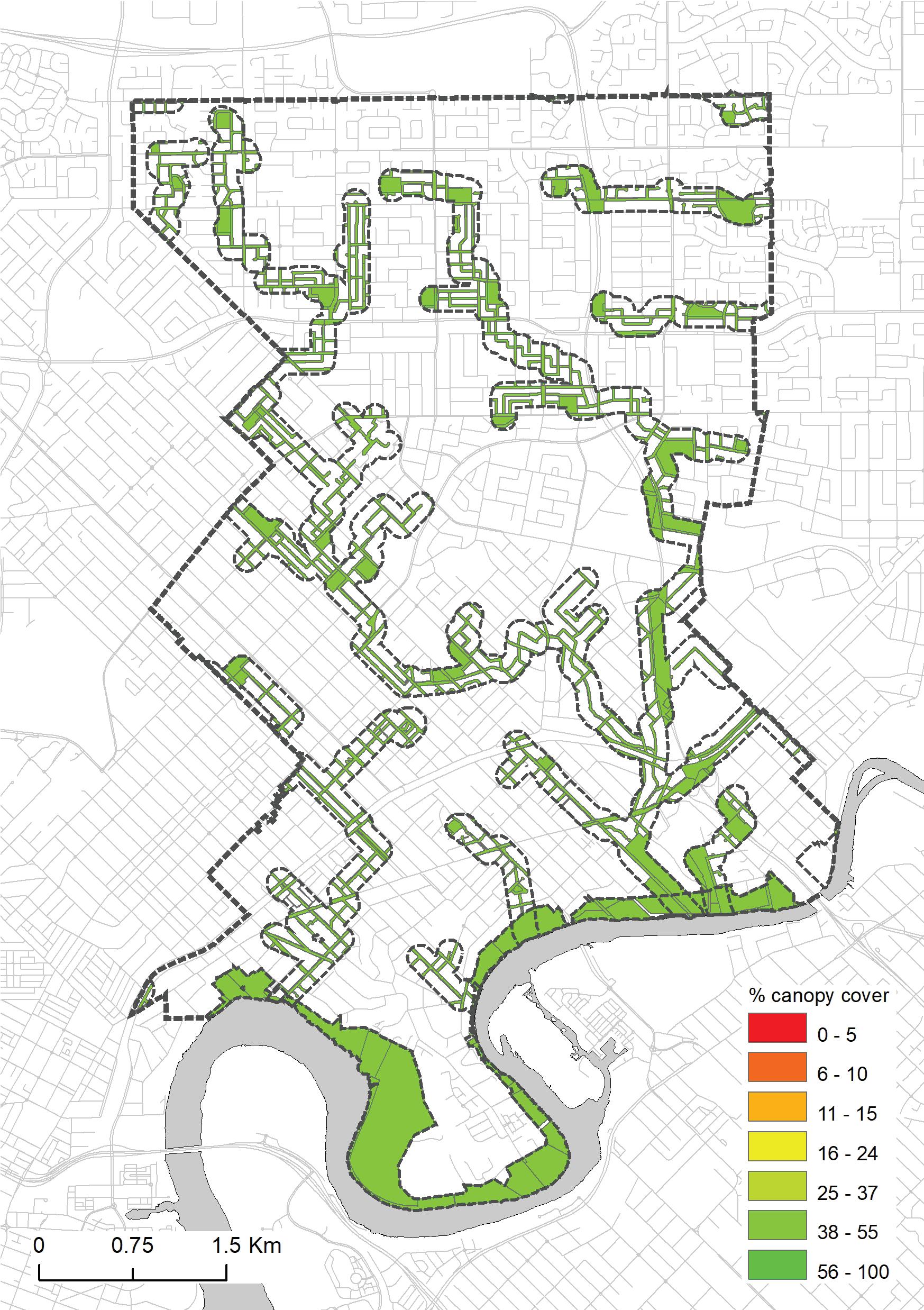
45
Green Micro-Grid
In this concept we focussed tree planting focussed in major connecting transit hubs, parks and schools with an overarching aim of increasing active transport to amenities but also existing and proposed train stations so to increase mass transit usage
After Before Before After
47
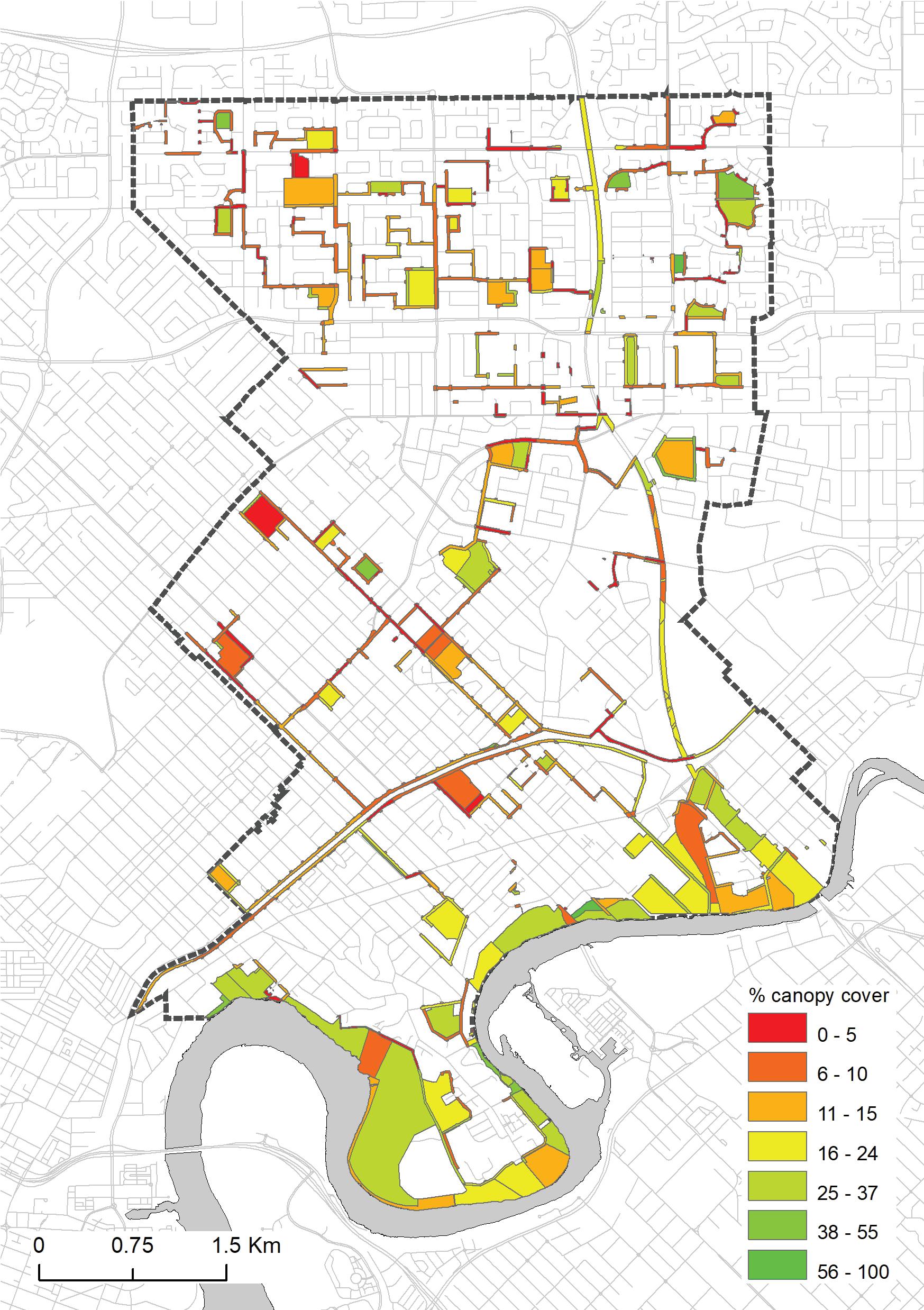
Green micro-grid: To achieve the City’s overall target of a 7% increase in canopy cover requires these streets – and adjacent parks – to go from 12 to 43% canopy cover
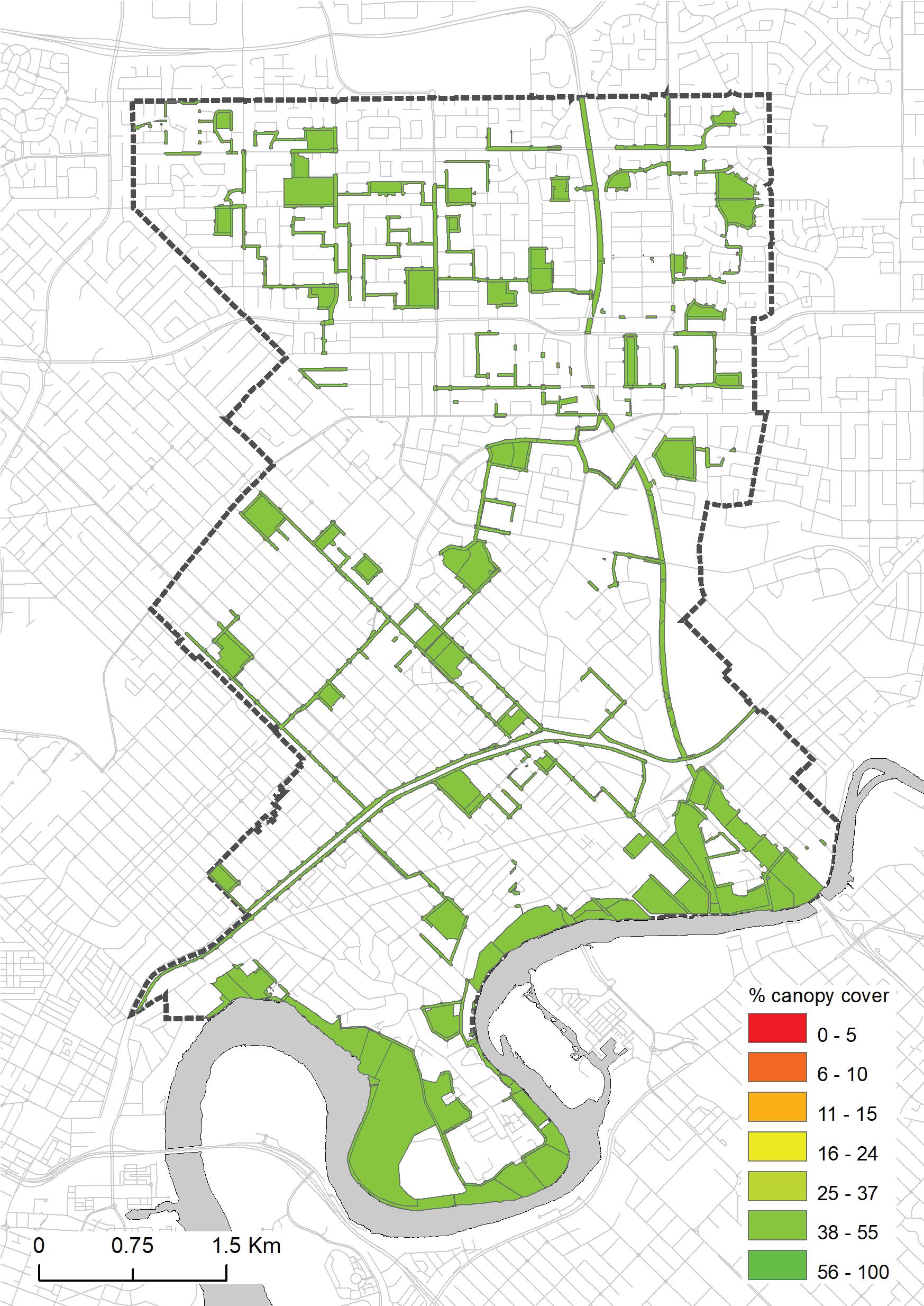
49
The green Funnel
In this concept, we focussed tree planting in streets, parks, and private land along areas the City of Bayswater have designated biodiversity corridors
Before After
51

The green funnel: To achieve the City’s overall target of a 7% increase in canopy cover requires these zones to go from 12 to 20% canopy cover

53
High density forest
In this lowest ranked concept, we focussed tree planting focussed in areas of the City of Bayswater which are zoned for urban densities between R25 to R40 but also areas with Activity Centre zonings.
Before
After
55

High- Density Forest: To achieve the City’s overall target of a 7% increase in canopy cover requires these zones to go from 13 to 63% canopy cover

57
Discussion
The findings indicate that rather than urban forest planning constituting a technical exercise to deliver a targeted increase in canopy cover that there is a significant appetite for plans and strategies that have an overarching theme or narrative which can both elicit community support...
Discussion
The findings of our surveys indicate that rather than urban forest planning constituting a technical exercise to deliver a targeted increase in canopy cover that there is a significant appetite for plans and strategies that have an overarching theme or narrative which can both elicit community support and (help to) neutralise community resistance. A respondent referred to the neighbouring LGA, the City of Stirling, where their urban forest strategy has floundered because ‘they have got no story to sell,’ as opposed to high ranking concepts such as the ‘Kid’s forest.’ As one respondent noted:
I would like to get kids involved in planting immediately around the schools. Like on the actual school verges, and then educate the kids a little bit more about tree benefits. Because then they will take that message home to mom and dad. And that is always a little bit of a sneaky driver for us. A bit of a sneaky ploy on our part, to then get the message out further. And then the kids are saying, “Oh, can we plant a tree on our verge mom and dad?”
This narrative dimension is often lacking in urban forest planning which policymakers often base on abstract targets for canopy cover. However, this same characterisation relates to planning in general. As Kim Dovey identifies ‘one of the major blockages to transformational change (in Australian cities) has been a lack of design vision that can capture the public imagination for more sustainable urban futures’ (Dovey & Woodcock, 2014, p. 1).
Many of the respondents raised concerns about concepts which could lead to inequities in the urban forest across the LGA. In contrast, others noted that some suburbs were particularly resistant to increased canopy cover as such planners need to carefully tailor urban forest planning to respond to community aspirations which vary from suburb to suburb. In this respect, there is no substitute for detailed community engagement –research we intend to undertake in the second phase of research for the City of Bayswater. Moreover, where residents feel the City has deprived them of urban forest canopy cover, the local government needs to have a clear explanation of why some areas are not receiving additional tree planting. Again, this is where a narrative dimension (such as The Kid’s Forest) can help, and also detailed mapping which reveals current ‘hotspots’ in terms of a lack of canopy cover provision.
On a practical level, many of the respondents cited the risks associated with planting trees within various designated land uses. Indeed, the findings of our surveys indicate that tree planting on private land, major street verges and drainage corridors are likely to incur significant risk due to either owners or regulators who may not share aspirations for achieving increased canopy coverage. These cited risks tallies with the literature which indicates that tree planting on land owned by public utilities or privately owned property is ‘high risk’ (Department of Planning Lands and heritage, 2018, p. 19). Conversely, the literature and our findings indicate that parks are generally
59
low-risk because planners have designated these ‘as spaces for biodiversity, recreation and relaxation with few development pressures’
(Department of Planning Lands and heritage, 2018, p. 20).
60
61
Conclusion
The
most successful cities in the twenty-first century will do the best job of protecting the ecosystem services on which they depend...’
Conclusion
In this report, we have tabled seven concepts for distributing a 7% increase in the City of Bayswater’s urban canopy cover and orchestrated an expert evaluation of these concepts via a detailed Delphi analysis. The results indicate that developing urban forest plans which have a narrative dimension and target the often vulnerable demographics – such as children and the elderly – are likely to resonate with experts and communities as opposed to merely technical exercises in urban forest provision. Finally, the report cautions that we should avoid overly concentrating tree planting in sites within which are owned or operated by individuals or stakeholders who are potentially resistant to tree planting.
Dr Robert McDonald, the Lead Scientist for the Global Cities program at The Nature Conservancy, predicts that ‘the most successful cities in the twenty-first century will do the best job of protecting the ecosystem services on which they depend’ (McDonald, 2015, p. 238). We have directed this modest urban forest plan and report towards this end.
63
Contributors
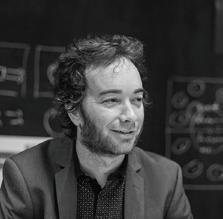
Dr Julian Bolleter
University of Western Australia
Australian Urban Design Research Centre
Level 2, 1002 Hay Street, Perth, WA 6000
Julian.bollbeter@uwa.edu.au

Paula Hooper
University of Western Australia
Australian Urban Design Research Centre
Level 2, 1002 Hay Street, Perth, WA 6000
Paula.hooper@uwa.edu.au
64
65
References
66
References
Amati, M., Boruff, B., Caccetta, P., Devereux, D., Kaspar, J., Phelan, K., & Saunders, A. (2017). Where should all the trees go? Investigating the impact of tree canopy cover on socioeconomic status and wellbeing in LGA’s. Prepared for Horticulture Innovation Australia Limited.
Astell-Burt, T., & Feng, X. (2019). Association of urban green space with mental health and general health among adults in Australia. JAMA network open, 2(7), e198209-e198209.
Astell-Burt, T., Mitchell, R., & Hartig, T. (2014). The association between green space and mental health varies across the life course. A longitudinal study. Journal of Epidemiology and Community Health, 68(6), 578-583.
Balaban, O., & de Oliveira, J. A. P. (2017). Sustainable buildings for healthier cities: assessing the cobenefits of green buildings in Japan. Journal of Cleaner Production, 163, S68-S78.
Bell, J. F., Wilson, J. S., & Liu, G. C. (2008). Neighbourhood greenness and 2-year changes in body mass index of children and youth. American Journal of Preventive Medicine, 35(6), 547-553.
Bolund, P., & Hunhammar, S. (1999). Ecosystem services in urban areas. Ecological Economics, 29(2), 293-301. doi:10.1016/s0921-8009(99)00013-0
Brunner, J., & Cozens, P. (2013). ‘Where Have All the Trees Gone?’ Urban Consolidation and the Demise of Urban Vegetation: A Case Study from Western Australia. Planning Practice & Research,
28(2), 231-255.
Chan, K. M., Balvanera, P., Benessaiah, K., Chapman, M., Díaz, S., GómezBaggethun, E., . . . Klain, S. (2016). Opinion: Why protect nature? Rethinking values and the environment. Proceedings of the National Academy of Sciences, 113(6), 1462-1465.
City of Bayswater. (2015). Greening our Garden City. Retrieved from Perth: https://www.bayswater.wa.gov.au/ CityOfBayswater/media/Documents/ Environment/FINAL_Urban_Forest_ Strategy_-WM-(1)-UPDATE-(002).pdf
City of Bayswater. (2018). Trees on Private Land and Street Verges. Retrieved from Perth: https://www. bayswater.wa.gov.au/online-services/ forms-and-publications/policies/2016/ trees-on-private-land-and-street-vergespolicy
City of Vancouver. (2018). Urban forest strategy. Retrieved from Vancouver: https://vancouver.ca/home-propertydevelopment/urban-forest-strategy.aspx
Coutts, A., Beringer, J., & Tapper, N. (2010). Changing urban climate and CO2 emissions: implications for the development of policies for sustainable cities. Urban Policy and Research, 28(1), 27-47.
doi:10.1080/08111140903437716
Coutts, A. M., White, E. C., Tapper, N. J., Beringer, J., & Livesley, S. J. (2016). Temperature and human thermal comfort effects of street trees across three contrasting street canyon environments. Theoretical and Applied Climatology, 124(1-2), 55-68.
Cox, D. T. C., Bennie, J., Casalegno, S.,
67
Hudson, H. L., Anderson, K., & Gaston, K. J. (2019). Skewed contributions of individual trees to indirect nature experiences. Landscape and Urban Planning, 185, 28-34. doi:https://doi. org/10.1016/j.landurbplan.2019.01.008
Curtin University, & Hames Sharley. (2013). The Housing We’d Choose: A Study for Perth and Peel. Retrieved from Perth:
De Vries, S., Van Dillen, S. M., Groenewegen, P. P., & Spreeuwenberg, P. (2013). Streetscape greenery and health: stress, social cohesion and physical activity as mediators. Social Science and Medicine, 94, 26-33.
Department of Planning. Urban Forest of Perth and Peel. Retrieved from http:// www.planning.wa.gov.au/ publications/7216.asp
68
Department of Planning, & Western Australian Planning Commission. (2015). Draft Perth and Peel @3.5 million. Retrieved from Perth:
Department of Planning Lands and Heritage. (2016). Urban Forest Mesh Blocks. Retrieved from: https:// catalogue.data.wa.gov.au/dataset/ urban-forest-mesh-blocks-2016
Department of Planning Lands and heritage. (2018). Better urban forest planning. Retrieved from Perth:
Dovey, K. (2016). Urban design thinking. London: Bloomsbury Academic.
Dovey, K., & Woodcock, I. (2014). Intensifying Melbourne: Trasit-Orientated Urban Design for Resilient Urban Futures. Retrieved from Melbourne: Duckworth-Smith, A. (2015). Backyard
bonanza: improving the quality of ‘popular’suburban infill. Australian Planner, 52(4), 297-313.
Duncan, J., Boruff, B., Saunders, A., Sun, Q., Hurley, J., & Amati, M. (2019). Turning down the heat: An enhanced understanding of the relationship between urban vegetation and surface temperature at the city scale. Science of the Total Environment, 656, 118-128.
Dunn, R. R., Gavin, M. C., Sanchez, M. C., & Solomon, J. N. (2006). The pigeon paradox: dependence of global conservation on urban nature. Conservation Biology, 20(6), 1814-1816. doi:10.1111/j.1523-1739.2006.00533.x
Hagan, S. (2017). Metabolic suburbs or the virtue of low densities. In A. Berger, J. Kotkin, & C. Guzman (Eds.), Infinite suburbia (pp. 468-477). Boston: MIT.
Hall, T. (2010). The Life and Death of the Australian Backyard. Collingwood Victoria: CSIRO Publishing.
Hartig, T., Mitchell, R., De Vries, S., & Frumkin, H. (2014). Nature and health. Annual Review of Public Health, 35, 207-228.
Hyndman, R. J., & Athanasopoulos, G. (2018). Forecasting: principles and practice: OTexts.
Ives, C. D., Lentini, P. E., Threlfall, C. G., Ikin, K., Shanahan, D. F., Garrard, G. E., . . . Rayner, L. (2016). Cities are hotspots for threatened species. Global Ecology and Biogeography, 25(1), 117-126.
Kaźmierczak, A. (2013). The contribution of local parks to neighbourhood social ties. Landscape and Urban Planning,
109(1), 31-44. doi:https://doi. org/10.1016/j.landurbplan.2012.05.007
Kelley, K., Clark, B., Brown, V., & Sitzia, J. (2003). Good practice in the conduct and reporting of survey research. International Journal for Quality in health care, 15(3), 261-266.
Kovats, R. S., & Hajat, S. (2008). Heat stress and public health: a critical review. Annu. Rev. Public Health, 29, 41-55.
Maas, J., van Dillen, S. M. E., Verheij, R. A., & Groenewegen, P. P. (2009). Social contacts as a possible mechanism behind the relation between green space and health. Health & place, 15(2), 586-595. doi:https://doi.org/10.1016/j. healthplace.2008.09.006
McDonald, R. (2015). Conservation for Cities: How to Plan and Build Natural Infrastructure. Washington: Island Press. McManus, P. (2010). Planning With and For Trees in Perth: Yesterday, Today and Tomorrow. In I. Alexander, S. Greive, & D. Hedgcock (Eds.), Planning Perspectives from Western Australia: A Reader in Theory and Practice (pp. 340-353). Perth: Fremantle Press.
Miller, J. R. (2005). Biodiversity conservation and the extinction of experience. Trends in Ecology and Evolution, 20(8), 430-434.
Miller, J. R., & Hobbs, R. J. (2002). Conservation where people live and work. Conservation Biology, 16(2), 330-337.
Mullaney, J., Lucke, T., & Trueman, S. J. (2015). A review of benefits and challenges in growing street trees in paved urban environments. Landscape
and Urban Planning, 134, 157-166.
Newton, P. W. (2010). Beyond greenfield and brownfield: the challenge of regenerating Australia’s greyfield suburbs. Built Environment, 36(1), 81-104. doi:10.2148/benv.36.1.81
Nouri, H., Beecham, S., Kazemi, F., & Hassanli, A. M. (2013). A review of ET measurement techniques for estimating the water requirements of urban landscape vegetation. Urban Water Journal, 10(4), 247-259.
Ossola, A., Hahs, A. K., & Livesley, S. J. (2015). Habitat complexity influences fine scale hydrological processes and the incidence of stormwater runoff in managed urban ecosystems. Journal of Environmental Management, 159, 1-10.
Pandit, R., Polyakov, M., & Sadler, R. (2013). Valuing Public and Private Urban Tree Canopy Cover. Not yet published.
Pereira, G., Christian, H., Foster, S., Boruff, B. J., Bull, F., Knuiman, M., & Giles-Corti, B. (2013). The association between neighborhood greenness and weight status: an observational study in Perth, Western Australia. Environmental Health, 12(1), 49. doi:10.1186/1476069X-12-49
Perveen, S., Kamruzzaman, M., & Yigitcanlar, T. (2017). Developing policy scenarios for sustainable urban growth management: a Delphi approach. Sustainability, 9(10), 1787.
Schwartz, M. W., Jurjavcic, N. L., & O’brien, J. M. (2002). Conservation’s disenfranchised urban poor. Bioscience, 52(7), 601-606.
Seddon, G. (1994). The Australian Back
69
Yard. In I. Craven (Ed.), Australian Popular Culture (pp. 22-35). Cambridge: Cambridge University Press.
Swaffield, S., & Deming, E. (2010). Landscape Architecture Research. New Jersey: Wiley.
The City of Melbourne. (2012). Urban Forest Strategy: Making a great city greener. Retrieved from Melbourne: https://www.melbourne.vic.gov.au/ community/greening-the-city/urbanforest/Pages/urban-forest-strategy.aspx
Threlfall, C. G., Mata, L., Mackie, J. A., Hahs, A. K., Stork, N. E., Williams, N. S., & Livesley, S. J. (2017). Increasing biodiversity in urban green spaces through simple vegetation interventions. Journal of applied ecology, 54(6), 1874-1883.
70
Threlfall, C. G., Walker, K., Williams, N. S., Hahs, A. K., Mata, L., Stork, N., & Livesley, S. J. (2015). The conservation value of urban green space habitats for Australian native bee communities. Biological Conservation, 187, 240-248.
Troy, P. (2004). Saving our cities with suburbs. In J. Schultz (Ed.), Griffith Review: Dreams of Land. Brisbane: Griffith University.
Tzoulas, K., Korpela, K., Venn, S., Yli-Pelkonen, V., Kazmierczak, A., Niemela, J., & James, P. (2007). Promoting ecosystem and human health in urban areas using green infrastructure: a literature review. Landscape and Urban Planning, 81(3), 167-178. doi:10.1016/j. landurbplan.2007.02.001
Ulrich, R. (1984). View through a
window may influence recovery from surgery. Science, 224(4647), 420-421. doi:10.1126/science.6143402
van den Born, R. J., Arts, B., Admiraal, J., Beringer, A., Knights, P., Molinario, E., . . . Soethe, N. (2018). The missing pillar: eudemonic values in the justification of nature conservation. Journal of Environmental Planning and Management, 61(5-6), 841-856.
Western Australian Department of Planning. (2010). Directions 2031 and Beyond: Metropolitan Planning Beyond the Horizon. Retrieved from Perth: Xing, Y., Jones, P., & Donnison, I. (2017). Characterisation of nature-based solutions for the built environment. Sustainability, 9(1), 149.
Yelenik, S. G., & Levine, J. M. (2011). The role of plant–soil feedbacks in driving native-species recovery. Ecology, 92(1), 66-74. doi:doi:10.1890/10-0465.1
71























